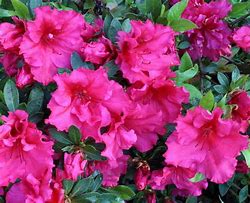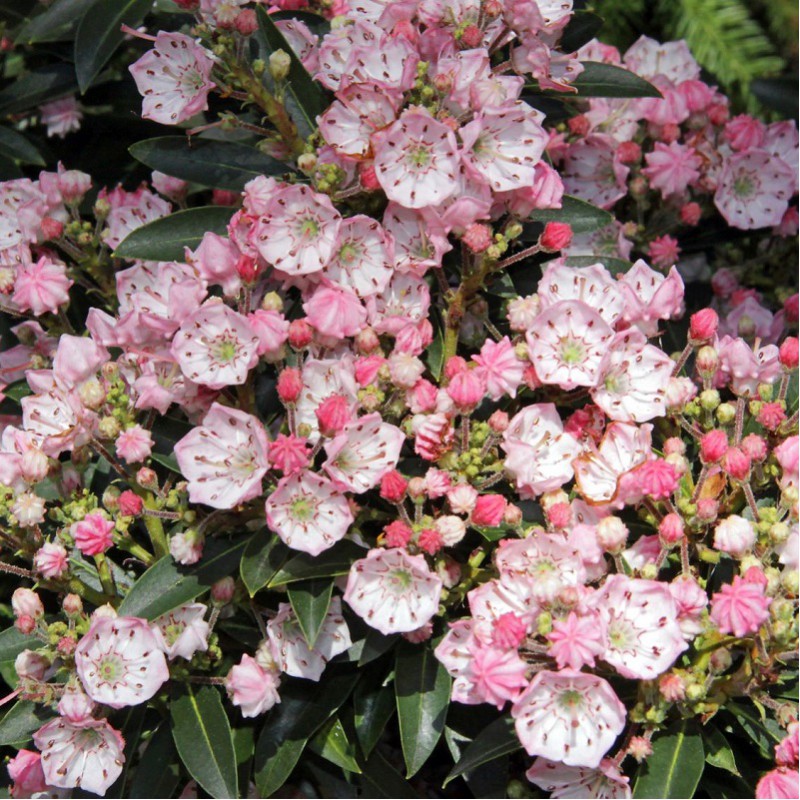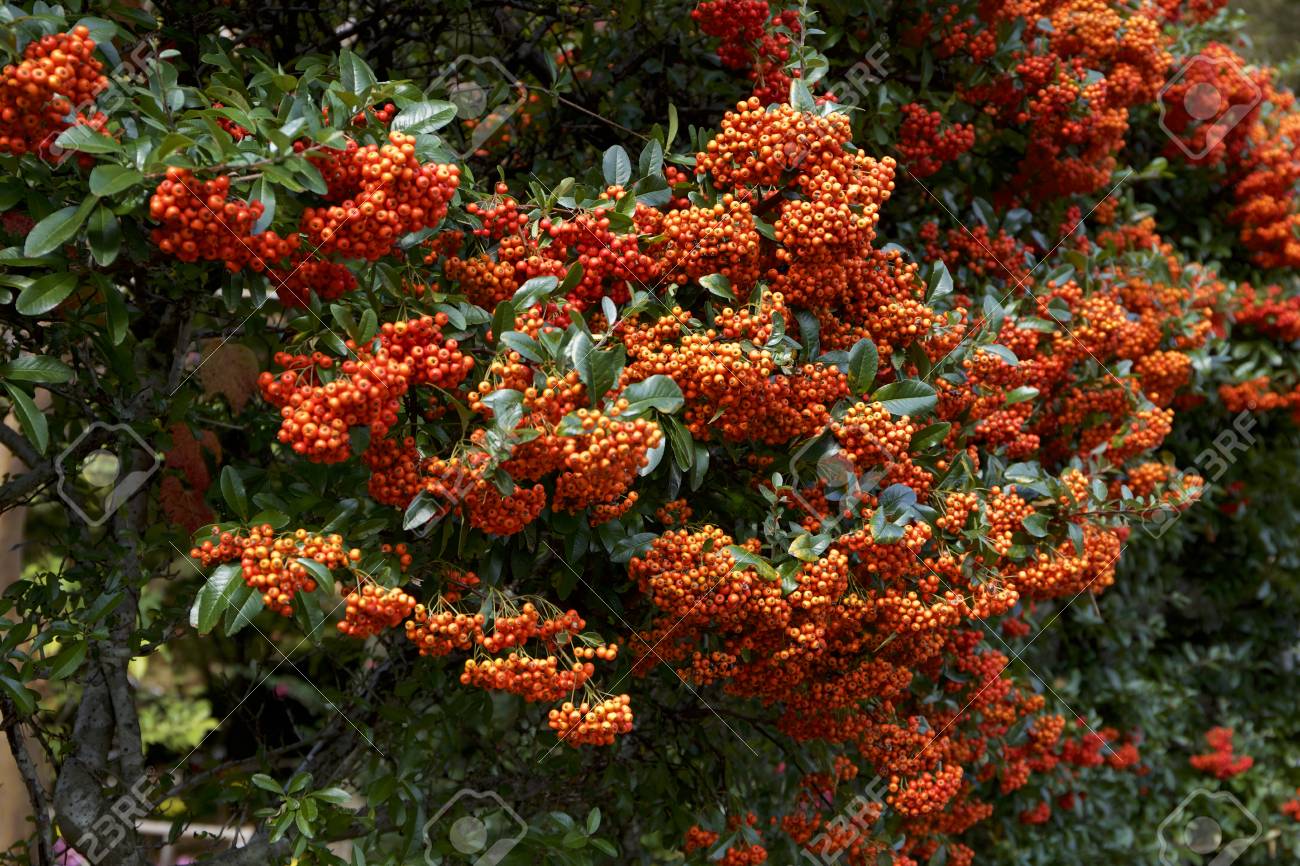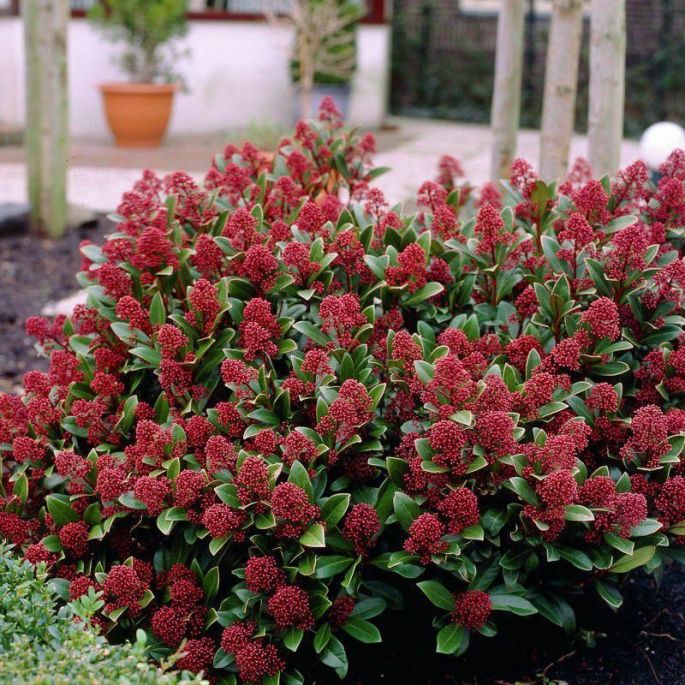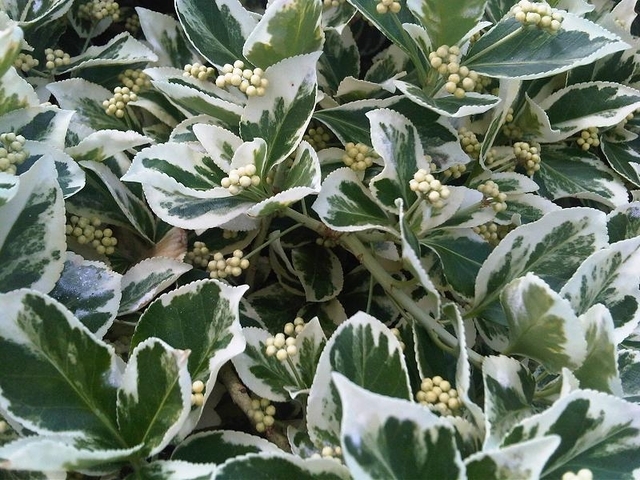It can be a secluded spot in an open space that gets little or no sun. If we’re dealing with an NE/NW facing garden it can be in an area that is chilly / exposed to the elements. Any plant that’s in shade will generally grow slower but it’s worth knowing more plants tolerate these conditions than you’d think.
Daphne’s are known for their flowers / scent in the cooler months though they’re not hardy in extreme conditions. It can be partial shade provided there is some sunlight. It will flower from winter to spring. Daphne odora provides fragrant flowers / variegated foliage.
Rhododendrons, although tolerate full sun, prefer partial shade. Since they’re a woodland plant they often do well in poor soil. They will compete with other plants for moisture, although not to excess, so the soil needs to be free draining. The PH. is important and has a bearing on its performance too. They prefer an acidic soil as do Azaleas, an ericaceous base with organic matter, humus rich in substance.
Camellias prefer an acidic soil but these shrubs are OK in semi shade, not too chilly though. Camellia’s do prefer a warmer aspect, not particularly resilient to the cold, damaging winds. Most Camellias flower in early spring. These are C. japonica. The winter flowering variety, C. sasanqua needs protecting from the sun, cold dry winds – the more sheltered the better. C. ‘winter Star’, however, is hardy and early flowering. Camellia x williamsii is also hardier than C. japonica and flowers in winter. It is good in shade too.
Aucuba japonica (spotted laurel) is a good hardy shrub. It will withstand adverse conditions. It is an evergreen. It offers interesting foliage as a result of the mosaic virus. It is noting this is a friendly virus; doesn’t harm the plant, just mutates the colour. In order to retain this effect, cut out the reverting green growth.
Cornus alba (Dogwood) is very good in a shaded area and exposed conditions. C. canadensis particularly for shade, C. alba for exposed areas. It will provide flowers, foliage and attractive bark in the winter months.
Virburnum davidii is tolerant of sun and shade. A shrub that attracts beneficial insects and provides flowers, foliage and scent. It prefers well drained soil but generally very easy to maintain. It is worth noting it is not a tidy shrub. It has an informal role in a mixed border and will not stay compact. It’s not keen on being exposed so dark but not cold.
Mahonia ‘Charity’ and ‘Winter sun’ most common. These will flower from autumn, suited to a cooler environment. The shrub tolerates being in shade – a strong possibility for those difficult areas. It’s a hardy shrub and provides scented flowers / bursting colour in winter. There is no real pruning, just removing unwanted growth in spring.
Skimmia is an evergreen providing flowers, foliage and berries throughout the year. A scented flower in spring attracting beneficial insects, much needed berries throughout autumn / winter. They will tolerate most conditions; soil, aspect, adverse weather but again partial shade. Skimmia can become leggy so do cut out bolted growth and cut out any unwanted in spring.
Kalmia (Mountain Laurel) is a very good shrub for shade. It flowers in early summer. It does fruit but it’s the pink, purple, white flowers that form a delicate cluster. It needs to be in well drained soil, not an area that gets waterlogged. It also prefers an ericaceous soil – full of humus rich matter and on the acidic side. Also prone to root rot, so make sure the crown of the plant protrudes from the surface, similar to roses.
Sambucus nigra (Elder) this shrub will tolerate a shaded spot but like most plants do better in full sun. It does benefit from lemon scented flowers in summer although the foliage on its own is impressive. It produces berries as a food source; popular with birds. It is hardy, though decidious so it loses it leaves. The soil also needs to be humus rich, high in nutritutional substance so a sandy consistency maybe not. However, the soil can be conditioned so it’s not particularly an issue.



